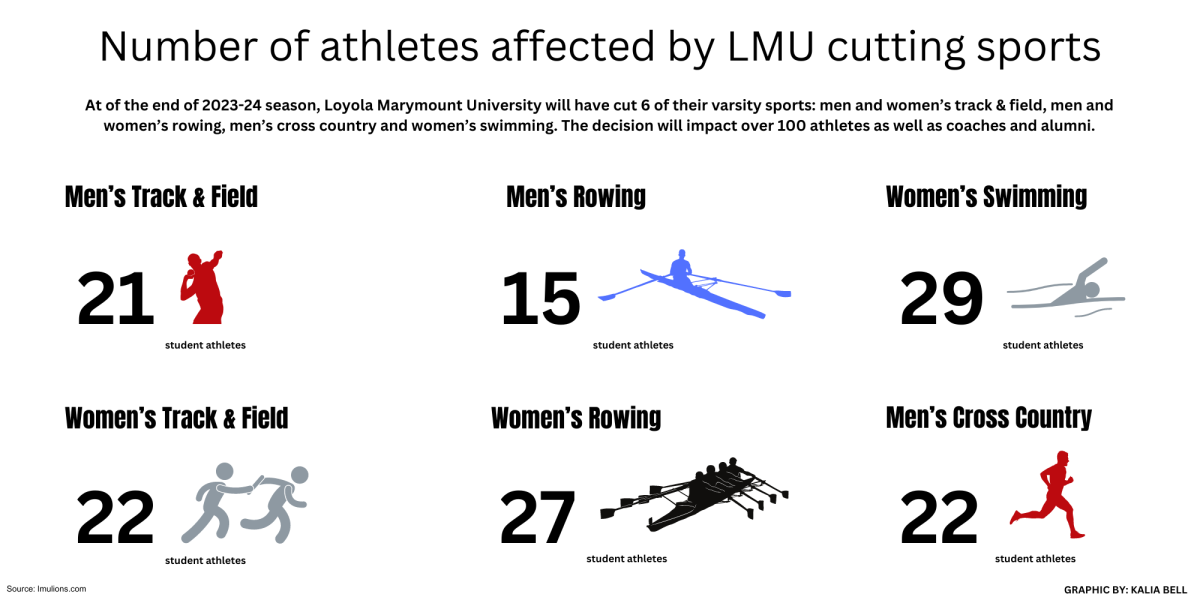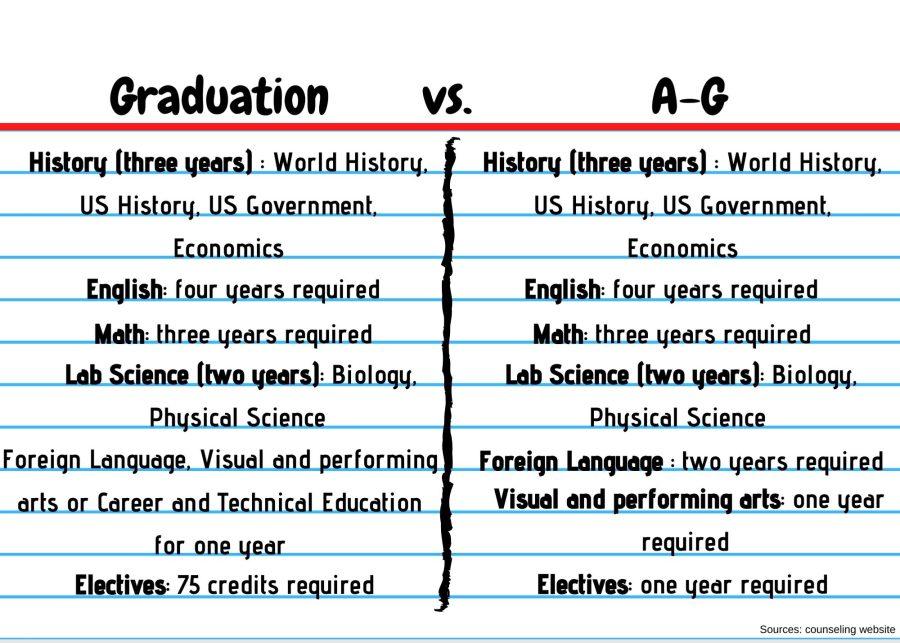The road to graduation has many different components. When senior year rolls around, students must check their Q portals to make sure they’ve covered all of their graduation and A-G requirements if they wish to attend certain colleges. Throughout one’s high school career, students should keep the distinction between graduation and A-G requirements in mind.
Though these requirements have different purposes, students have found it difficult at times to differentiate between the two.
Graduation requirements need to be met to receive a high school diploma, and some of these requirements are set by the state while others are controlled by the school. A student must also meet a certain number of credits to graduate, which can be obtained by taking various classes. The list of classes required for graduation, although extensive, ultimately benefits the student.
“I think that [the graduation requirements] do match what students need,” said WHS counselor Moira Fagan-Simpson. “The minimum requirements are fine, and the requirements students are meeting to the rigor of being admitted are certainly preparing them for success in college.”
The requirements have been set so students can use their high school knowledge to excel in college or other avenues they wish to pursue. They have not been changed in almost 15 years since outcomes from previous classes show that they have risen to the rigorous curriculum of college-level classes.
“All of our students say that the preparation they receive in WHS’s English classes, [its] math classes, science classes, history classes all has prepared them really well to be top of their class at any of the UCs, Cal States or private schools,” said Fagan-Simpson.
Courses like government, math, science and English may seem obvious choices for graduation requirements, but the less straight-forward classes like economics, health and visual and performing arts also serve a purpose: they intend to explore a different side to students’ skills and create a more well-rounded person.
“We [obviously] focus on English and math and history and all those things, but visual or performing arts uses a different part of your brain,” said WHS principal Jason Branham. “That balance of trying to force kids to be exposed to a wide variety of different areas or items [is important].”
For example, economics equips students with relevant knowledge about everything through personal finances to the global economy that will be useful when they become adults.
“I think that’s why [economics is] a requirement because it’s got great information about our country, how things work, how students need to be aware of their own finances, how big banks work and how countries work in regard to economics,” said Fagan-Simpson.
Health is also included, as it serves to educate students by stressing the importance of maintaining a good mental and physical well-being as well as awareness of diseases or actions that can harm their health .
“Life-long, good health [and] understanding the importance of … sexually transmitted diseases, … drug use [and] alcohol use [is important],” said Branham. “As a graduation requirement, as students are becoming adults, really re-emphasizing and understanding the importance and life-long impacts that those health related items can have [is helpful].”
Furthermore, visual and performing arts classes encourage students to use a different part of their brain and cultivate their creativity in a different way.
“For the visual and performing arts, I think that it’s a great requirement because students are forced to get a little bit out of their comfort zones, and we know that that is where they can grow, challenge … and learn about themselves,” said Fagan-Simpson.
In addition, by following the graduation requirements, students prepare themselves to enter into their adult lives where they will use what they learned in high school.
“Through all these different avenues and ventures, you’re able to pull, whether you realize it or not, … from all these different areas some of these bigger, overlying ideas and concepts in your life,” said Branham.
Though similar in some aspects, A-G requirements serve a different purpose than graduation requirements. They are chosen by CSU and UC schools based on which classes they want students to have completed upon admission.
“One of the things that makes the public higher education systems in California the best in the world is the high standards that UCs and CSUs require for admission,” according to the Oakland High School counseling website.
High schools do not have any control over which classes are chosen as A-G because they are all controlled and set forth by the CSU and UC schools. Despite this, by aligning their classes with the A-G standards, students are able to fulfill the graduation requirements.
Furthermore, this allows students more versatility when it comes to deciding which path they want to pursue after high school. If students plan on attending a college, they’re already prepared; if they don’t attend, there’s no harm done.
“Whether you’re applying to an out-of-state school, a private school or anything else, if you’re meeting those A-Gs, the likelihood that you’re meeting the requirements for those schools as well is extremely high,” said Branham. “The A-Gs allow students to have a much wider net that they can cast when they’re looking at future plans.”























